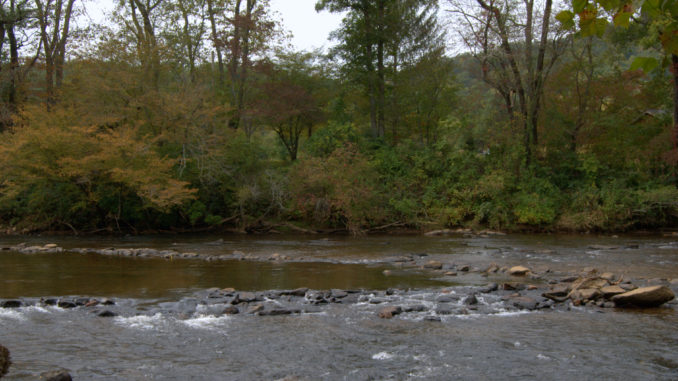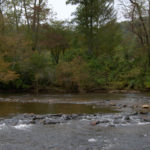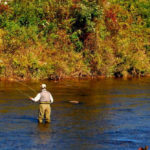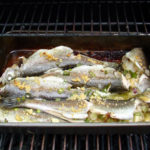
Ancient fish trip reminds one of bygone era
I fantasize about time travel, being able to go back in the time before Europeans came to this country, when it was populated by indigenous people, when forests were full, game was abundant and streams were clean and full of fish. Scientists hint now of that possibility, but it sounds more like science fiction than reality. If it happens in my lifetime, I’ll be ready to go with fly-rod in hand.
I often get the illusion of early times when I fish sections of the Tuckasegee River in Jackson County, especially those sections that still have long stretches of undisturbed shorelines —nothing but trees and shrubs, where the water often runs clear and fish are plentiful. I take trout home to eat, just enough for me or my family, nothing excessive. Catch only what you’ll eat that day is my credo.
On one section of the Tuckasegee, now designated as catch-and-release waters, is a bit of history, going back to the time when the Cherokee had villages along the river. This one section, on North River Rd. in the Webster area, has a well-preserved fish weir, apparently originated by the Cherokee and rebuilt and used by farming families who settled on the land.
Jim Allman, a retired insurance executive, has a home and property on the Tuckasegee that overlook the weir, an almost perfect V of rocks that have withstood high waters and floods for more than 60 years. He is the third generation of Allmans to live on the land that his great-grandfather Polk Allman purchased and settled in the 1870s.
The weir was there when Polk Allman built his farmstead on the river bank, and the Allman family used the weir to trap the abundant red horse and suckers and occasional trout. Traps made from left-over sawmill slats were placed at the apex of the weir when fish began their annual migration downstream in the fall. They caught fish by the truckloads. The fish were dressed and preserved in wooden barrels filled with brine and eaten during the winter. The pickling process enabled the Allmans to eat the fish, bones and all.
The early Cherokee trapped them in baskets and preserved them by smoking, a practice that was followed by indigenous tribes all over the continent, from Canada to South America. Weirs also have been found in Europe that archeologists believe were built 1,000 years B.C. Although early Cherokee did occasionally use hooks (made from antlers) and line to catch fish, it was far more productive to trap them. The early Cherokee caught fish for food, not for sport, a practice originated by Europeans and still followed wherever in the world trout are found.
The great flood of 1940 destroyed most of the weir on the Tuckasegee, but the Allmans rebuilt it, ferrying huge rocks downstream on home-made wooden rafts. When state laws were passed prohibiting fish trapping in the mid-1940s, the Allmans never used the weir again.
The large section of still water below the weir is one of the more productive areas on the river. Numerous remnants of Cherokee-built weirs are still evident on sections of the Little Tennessee River in Macon County, but none as well preserved as the Tuckasegee weir.
Preserving fish, such as trout, by smoking them is still fairly common in western North Carolina and many other places, but few people, if any around these parts, preserve them by pickling as the early settlers did. Although smoked trout is tasty, I prefer them fried or, occasionally, baked. One of the best trout meals I’ve ever eaten was trout fried to a golden brown and accompanied by a mess of fried potatoes mixed with fresh ramps (only available in the spring). It is a true gustatory experience.
If time travel ever does become a reality, the only way it will work is if people can go back to only look, but not to take. Otherwise, they’ll just muck it up as they have for eons.








Be the first to comment